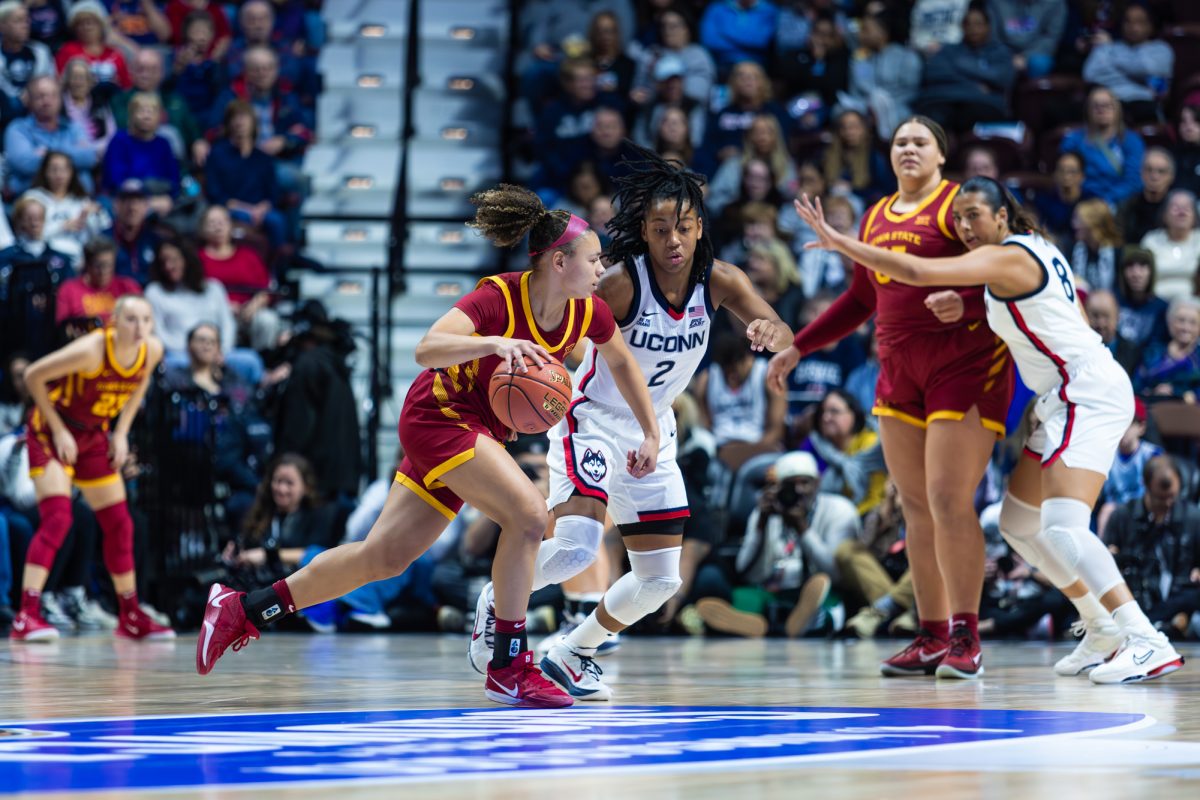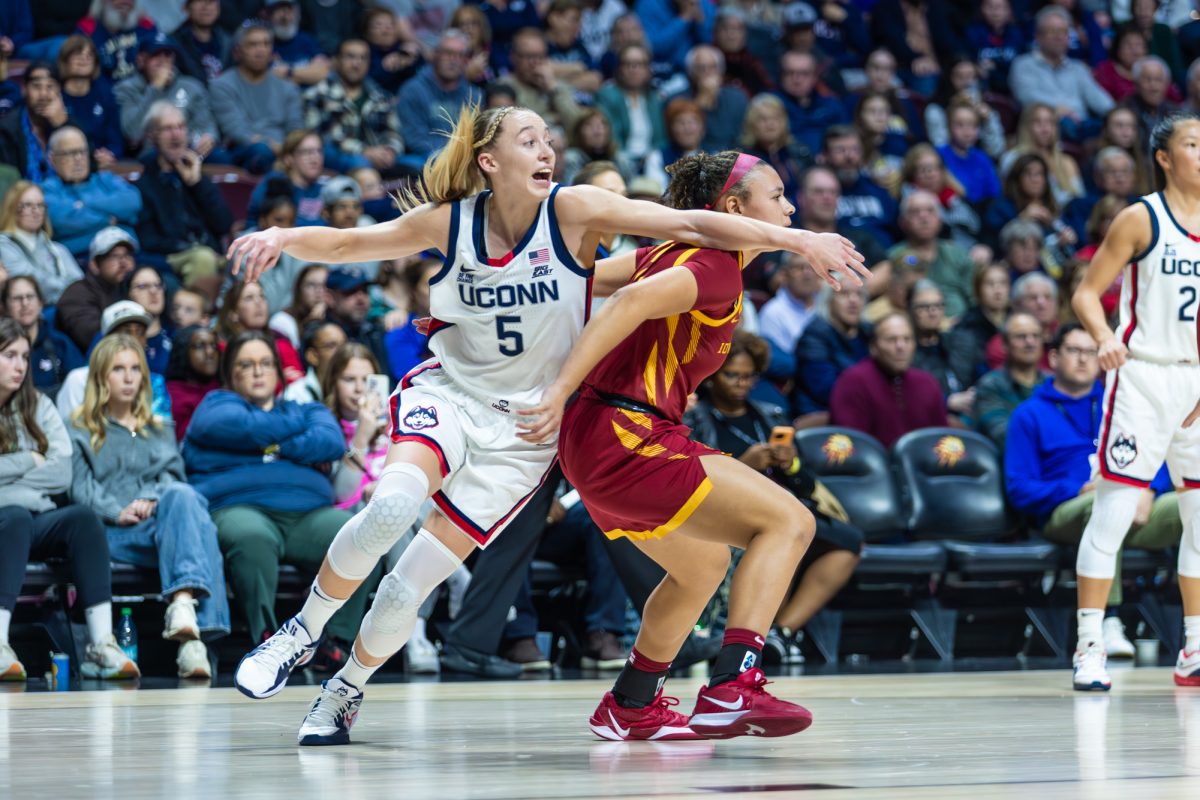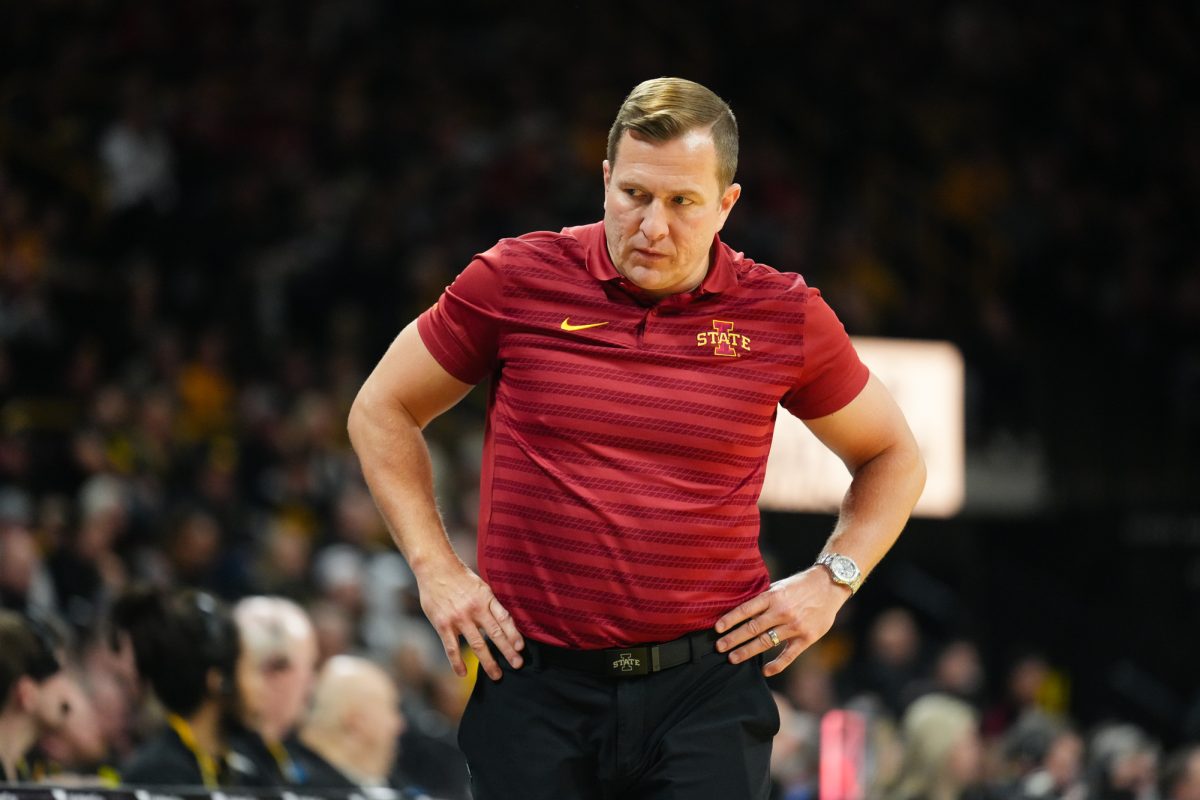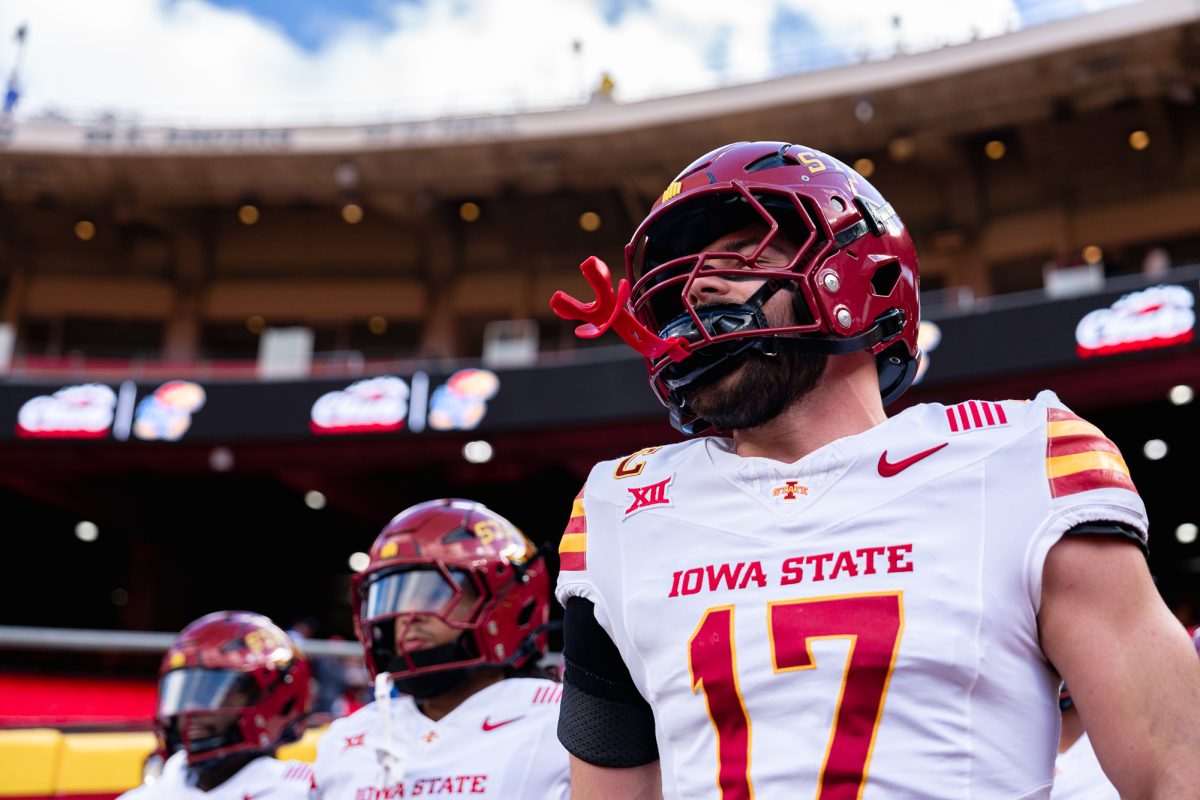Cardinals bring rushing tradition to Ames
September 17, 1998
When you think of rushing dominance in college football, a number of perennial talents probably come to mind.
Depending upon your preference and geographic locale, you may call to mind images of Texas Longhorns all the way from Earl Campbell to Ricky Williams.
Perhaps you think back to Oklahoma Sooner teams that excelled with performers like Steve Owens and Billy Sims.
Or maybe you prefer to focus on more recent backfields, like the Oklahoma State Cowboys of the late ’80s who featured the likes of both Barry Sanders and Thurman Thomas.
Many images come to mind when you imagine the top backs in college football.
Some have blinding speed. Others are agile and elusive. Still others punish defenses with their size and strength.
If you’re a typical football fan, though, all of these athletes probably have one thing in common:
They’re not Ball State Cardinals.
What few fans realize is that the Ball State football program of the 1990s has turned out more running backs with professional potential than the majority of college football’s Top 25.
Each of Ball State’s annual rushing leaders since 1989 has either played in the National Football League or been invited to team tryouts.
The success began in the late ’80s with a talented young tailback named Bernie Parmalee. From 1987 to 1990, Parmalee racked up 3,493 yards on the ground as well as 26 rushing touchdowns.
Parmalee is in his seventh season with the Miami Dolphins and has managed six 100-yard rushing performances so far in his professional career.
Corey Croom, Parmalee’s successor in the Cardinal backfield, did not let fans down after Bernie moved on.
Croom is the third-leading career rusher in Ball State history (2,725 yards), put together the school’s second-best single season total in 1992 (1,157 yards) and managed the most explosive day of running in Muncie, Indiana since the mid-1970s (242 yards vs. Miami University in 1992).
When Croom moved on to the New England Patriots in 1993, Tony Nibbs took over.
In 1994, Nibbs piled up 1,210 yards, a mark which still stands as the best single-season mark in Cardinal history. He currently occupies the sixth spot on the all-time career rushing charts at BSU (2,098 yards) and was affiliated with the Cleveland Browns for the 1995 season.
After Nibbs, the Cardinals relied upon halfback Michael Blair, who led the team in rushing in both 1995 and 1996. Blair managed 3,051 yards in his Ball State career, second only to Parmalee on the all-time charts.
Michael is currently a member of the Green Bay Packers and received considerable playing time on Sunday when Dorsey Levens went down with a leg injury.
In 1998, the tradition of “Tailback U,” as it is referred to by players and opponents alike, is continuing through a trio of talented backs.
Seniors LeAndre Moore and James Terrell and sophomore Kevin Cartwright have taken the reins from the likes of Parmalee and Croom and are looking to maintain the level of excellence associated with their predecessors.
Cartwright, a 6-foot, 216-pounder out of Jasper, Indiana, holds the title of third-leading career rusher in Indiana state high school history after collecting an astounding 6,355 yards in four seasons.
The sophomore saw his first collegiate action last season and responded with 380 yards on 87 carries (4.4 yards per carry). His career-best game was a 94-yard performance against Northern Illinois on October 25.
So far in 1998, Cartwright has been the most effective of the Ball State backs, averaging 4.8 yards per rush.
Terrell, a 6-foot, 207-pounder out of Bourbonnais, Illinois has increased his workload with each consecutive season at BSU.
The senior had only 11 and 55 yards in his first two seasons, respectively, but responded to opportunity last year in rushing for 468 yards on 100 carries (4.7 yard average).
Terrell’s best game as a Cardinal came against the Akron Zips last season in a performance that produced 146 yards on the ground.
In Terrell’s first two 1998 contests, he has seen the ball only 17 times but has managed 67 yards on those few carries.
The feature runner, though, for the 1998 Ball State Cardinals is Moore, a 5-foot-7, 201-pounder from Sandusky, Ohio.
Moore has already made his mark amongst the Cardinal all-time greats.
He led the 1997 squad with 884 rushing yards, seven touchdowns and a 5.1 yards per carry average.
Moore currently sits in fourth place among career Ball State rushers with 2,321 yards after three consecutive seasons in which he collected no fewer than 600 yards.
The talented tailback is also among the best pure athletes in Ball State history.
His bench press of 425 pounds is the best on the squad, and his 565-pound squat is eighth. He also sports a 4.50 40-time and one of the ten best verticals on the squad at 34.5.
Moore has 150 yards and two touchdowns in his first two weeks and just seems to be warming up.
The strong combination of Moore, Terrell and Cartwright accounted for 1,860 yards and 13 TDs last season and will likely only get better in 1998.
Despite a pair of opening losses to South Carolina and Eastern Michigan, the Cardinals are optimistic about this year and their conference season, in particular. To maintain that optimism, though, Ball State will need to witness some solid performances from their strong trio of tailbacks.
If history is an indicator, they won’t be disappointed.






